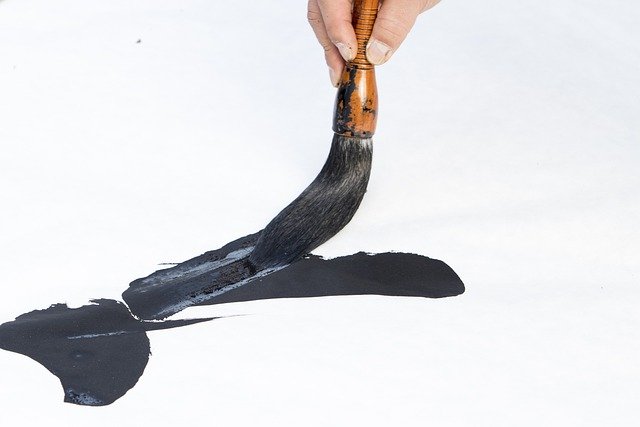In a world filled with constant distractions, fast-paced communication, and the pursuit of efficiency, the ancient art of Chinese calligraphy offers a profound counterbalance. It is an art form that invites mindfulness, reflection, and a deep connection with oneself. Chinese calligraphy is much more than just a method of writing; it represents an intricate and powerful art form that has spanned millennia, evolving into a symbol of discipline, culture, and the harmonious balance between simplicity and complexity.
For those who wish to delve deeper into Chinese culture, calligraphy offers an extraordinary way to not only understand the language but to engage with the philosophy, history, and aesthetics that underpin one of the world’s oldest civilizations. LC Chinese School in Oslo provides an opportunity for enthusiasts, beginners, and those curious about Chinese culture to explore this ancient art. Whether you are seeking to learn Chinese characters or to experience the meditative and artistic beauty of calligraphy, our courses are designed to help you on this journey. Click here to register for calligraphy classes and start your exploration today.
Table of Contents
ToggleThe Historical Roots of Chinese Calligraphy
Chinese calligraphy has been practiced for over 3,000 years and remains a central pillar of Chinese cultural identity. The earliest forms of Chinese writing appeared during the Shang Dynasty (1600–1046 BC), inscribed on oracle bones, which were used for divination and communicating with ancestors. These inscriptions are the precursors to the Chinese characters that form the backbone of the language today.
The evolution of Chinese characters took place over thousands of years, and calligraphy developed alongside it. Five major script styles emerged, each with its own unique characteristics and aesthetic:
- Seal Script (篆书, zhuànshū): One of the oldest forms of Chinese script, the Seal Script is characterized by its rounded, even lines and formal structure. This style is still used today in seals and inscriptions, retaining a strong link to ancient China.
- Clerical Script (隶书, lìshū): Developed during the Han Dynasty (206 BC–220 AD), this script is more fluid and legible than the Seal Script, with characters becoming more standardized.
- Regular Script (楷书, kǎishū): The most widely recognized and formal style, Regular Script is the foundation for modern Chinese writing. Every stroke and line is clear and distinct, making it easier to read.
- Running Script (行书, xíngshū): This script is more cursive and free-flowing than Regular Script, offering a balance between legibility and speed of writing. It is often used for personal writing and informal documents.
- Cursive Script (草书, cǎoshū): The most expressive and abstract of the five styles, Cursive Script is often compared to a dance of ink across the page. It sacrifices legibility for spontaneity, allowing the artist to express emotions more directly through the brushstrokes.
Each of these styles has its own rules and guidelines, and mastering them requires years of dedicated practice. However, at the core of Chinese calligraphy is not just technical proficiency, but also the ability to convey one’s inner self through the written word. This makes calligraphy a deeply personal and spiritual practice for many.
Calligraphy as a Reflection of Chinese Philosophy
Chinese calligraphy is not just an art form; it is a physical manifestation of Chinese philosophy. The philosophies of Confucianism, Daoism, and Buddhism have all left their mark on the way calligraphy is practiced and perceived in Chinese culture.
Confucianism and Calligraphy
Confucianism (儒家, Rújiā), with its emphasis on self-cultivation, discipline, and respect for tradition, aligns closely with the practice of calligraphy. According to Confucian thought, mastering the art of calligraphy is part of the process of developing moral and intellectual virtues. It requires patience (耐心, nàixīn), perseverance (毅力, yìlì), and attention to detail. Confucius (孔子, Kǒngzǐ) himself is said to have valued the practice of writing as a means of refining one’s character. For the Confucian scholar, writing beautifully is not only a matter of technical skill but a reflection of their inner harmony and cultivated mind.
Daoism and Calligraphy
Daoism (道教, Dàojiào) emphasizes the concept of balance, naturalness, and harmony with the flow of life. In Daoist philosophy, the universe is seen as a continuous flow of energy, known as qì (气, qì). This flow of energy is mirrored in the brushstrokes of a calligrapher. The brush must move in harmony with the paper, the ink, and the writer’s emotions, creating characters that are both spontaneous (自然, zìrán) and controlled.
One of the core principles of Daoism is wúwéi (无为, wúwéi), or non-action, which in the context of calligraphy means allowing the brush to flow naturally, without forcing the strokes. The goal is to achieve a state where the artist is in tune with the brush and the ink, and the characters are created effortlessly. This aligns with the Daoist ideal of living in harmony with nature, where everything flows smoothly and effortlessly.
Buddhism and Calligraphy
Buddhism (佛教, Fójiào), particularly Zen Buddhism (禅宗, Chánzōng), has also had a significant influence on Chinese calligraphy. The practice of calligraphy is often viewed as a form of meditation (冥想, míngxiǎng), where the act of writing becomes a way to still the mind and focus entirely on the present moment. In Buddhism, mindfulness (正念, zhèngniàn) is a key practice, and calligraphy provides an excellent medium for developing this quality.
When practicing calligraphy, the artist must concentrate on every detail—each stroke, the pressure of the brush, the ink’s absorption into the paper. This focus brings about a state of mindfulness, where the calligrapher is fully present, calm, and centered. The repetitive nature of writing characters helps quiet the mind, much like chanting a mantra. Through this process, the calligrapher cultivates inner peace and clarity.
The Power of Simplicity in Calligraphy
At first glance, Chinese calligraphy may seem simple—black ink on white paper, formed into characters. But beneath this apparent simplicity lies a deep well of complexity, both in terms of technique and meaning. Chinese characters are composed of a specific number of strokes (笔画, bǐhuà), and each stroke must follow precise guidelines in terms of order, direction, and pressure.
The simplicity of Chinese calligraphy is deceptive. A single misplaced stroke can change the entire character’s meaning or disrupt the balance and harmony of the composition. For example, a character like 天 (tiān), meaning “heaven,” may appear simple, but its balance and proportions require careful execution. Every element, from the sweeping horizontal line to the more compact strokes underneath, must work together to create a unified whole.
However, the true power of simplicity in calligraphy goes beyond the technical aspects. Simplicity in Chinese calligraphy reflects the deeper philosophical concept of reducing excess to reveal the essence. Instead of relying on ornate designs or complex compositions, Chinese calligraphy distills meaning into the barest essentials—strokes of ink on paper. The fewer strokes a character has, the more challenging it can be to express its meaning with grace and precision. It is through this simplicity that the artist conveys profound meaning.
Calligraphy as a Meditative Practice
One of the most significant benefits of practicing Chinese calligraphy is its meditative nature. In today’s fast-paced world, the practice of calligraphy offers a rare opportunity to slow down, center oneself, and focus entirely on the moment at hand. The act of writing a single character can take minutes of concentrated effort, requiring the calligrapher to be fully present and aware of each brushstroke.
In this way, calligraphy is often compared to meditation (冥想, míngxiǎng). Just as a meditator focuses on their breath or a mantra, the calligrapher focuses on the brush, the ink, and the paper. This concentration brings about a state of flow (流动, liúdòng), where the mind becomes calm, and the outside world fades away. In this state, the artist is fully absorbed in the act of creation, and the strokes flow naturally from the brush.
For many practitioners, calligraphy becomes a form of self-reflection (自我反省, zìwǒ fǎnxǐng). The process of writing characters mirrors the process of introspection, where the calligrapher must examine their own emotions, thoughts, and energy. A distracted mind will result in shaky or uneven strokes, while a calm and focused mind will produce balanced, harmonious characters. In this way, calligraphy serves as both an art form and a tool for personal growth.
At LC Chinese School in Oslo, our calligraphy classes not only teach the technical skills needed to write Chinese characters but also emphasize the meditative and reflective aspects of the practice. Whether you are looking to improve your handwriting or to find a calming, mindful activity, our courses are designed to help you achieve your goals. Click here to register and discover the power of simplicity in Chinese calligraphy.
The Tools of the Trade: The Four Treasures of the Study
Chinese calligraphy is deeply rooted in tradition, and this extends to the tools used by calligraphers. Known as the Four Treasures of the Study (文房四宝, wénfáng sìbǎo), the brush (笔, bǐ), ink (墨, mò), paper (纸, zhǐ), and inkstone (砚, yàn) are essential tools that have been used for centuries in the practice of calligraphy.
The Brush (笔, bǐ)
The Chinese calligraphy brush is a unique tool, made from animal hairs such as wolf, rabbit, or goat, which are attached to a bamboo or wooden handle. The flexibility of the brush allows the artist to create a wide range of strokes, from delicate, fine lines to bold, sweeping curves. Mastering the brush is one of the most challenging aspects of calligraphy, as the calligrapher must learn to control the pressure and direction of the brush with precision.
The Ink (墨, mò)
Traditionally, Chinese calligraphers make their own ink by grinding an inkstick (墨条, mò tiáo) against an inkstone (砚, yàn) and mixing it with water. This process, while time-consuming, is considered an important part of the ritual of calligraphy. The quality of the ink affects the texture, color, and depth of the characters, making it an essential element in the final work.
The Paper (纸, zhǐ)
The paper used in Chinese calligraphy is known as xuānzhǐ (宣纸, xuānzhǐ), or rice paper. It is prized for its softness and absorbency, which allows the ink to flow smoothly and creates a beautiful contrast between the black ink and the white paper. However, its delicate nature also makes it challenging to work with, as even a small mistake can ruin the entire piece.
The Inkstone (砚, yàn)
The inkstone is used to grind the inkstick and mix it with water. These stones are often intricately carved and highly valued as both functional tools and works of art in their own right. The process of preparing the ink is considered part of the meditative practice of calligraphy, allowing the artist to slow down and focus on the task at hand.
Mastering these four tools requires patience, discipline, and a deep understanding of the principles of balance, harmony, and simplicity. At LC Chinese School, our instructors will guide you through every step of the process, from preparing your materials to executing your first characters with confidence.
Calligraphy in the Modern World: Tradition Meets Innovation
While Chinese calligraphy is an ancient art, it continues to thrive in the modern world. Today, calligraphers are experimenting with new materials and techniques, blending traditional calligraphy with contemporary art forms such as digital media, street art, and performance art. This fusion of old and new has allowed calligraphy to remain relevant and vibrant in the 21st century.
In China, calligraphy exhibitions, competitions, and workshops are held regularly, attracting both professional artists and hobbyists. Modern calligraphers have also begun to incorporate calligraphy into fashion, graphic design, and architecture, further expanding the reach of this ancient art form.
For learners outside of China, studying calligraphy provides a way to engage with Chinese culture on a deeper level, beyond the mechanics of language learning. It offers a window into the philosophy, aesthetics, and values that have shaped Chinese society for thousands of years.
Why Learn Calligraphy?
Whether you are learning Chinese or simply seeking a new creative outlet, calligraphy offers numerous benefits. It sharpens your focus, improves hand-eye coordination, and cultivates patience. On a deeper level, it allows you to connect with a tradition that has been passed down through generations, offering insight into the philosophy and values of Chinese culture.
At LC Chinese School in Oslo, we offer a range of calligraphy classes designed to introduce students to the beauty and discipline of this ancient art. Our experienced instructors will guide you through the basics, helping you to develop your skills and find your own voice in the world of calligraphy. Click here to register and begin your journey into the art of Chinese calligraphy today.
Join Us at LC Chinese School
Are you ready to embark on a journey of cultural and personal discovery through the art of Chinese calligraphy? Whether you are a complete beginner or have some experience, our classes are tailored to suit your needs. Don’t miss this opportunity to engage with one of the most beautiful and meaningful art forms in Chinese culture.







